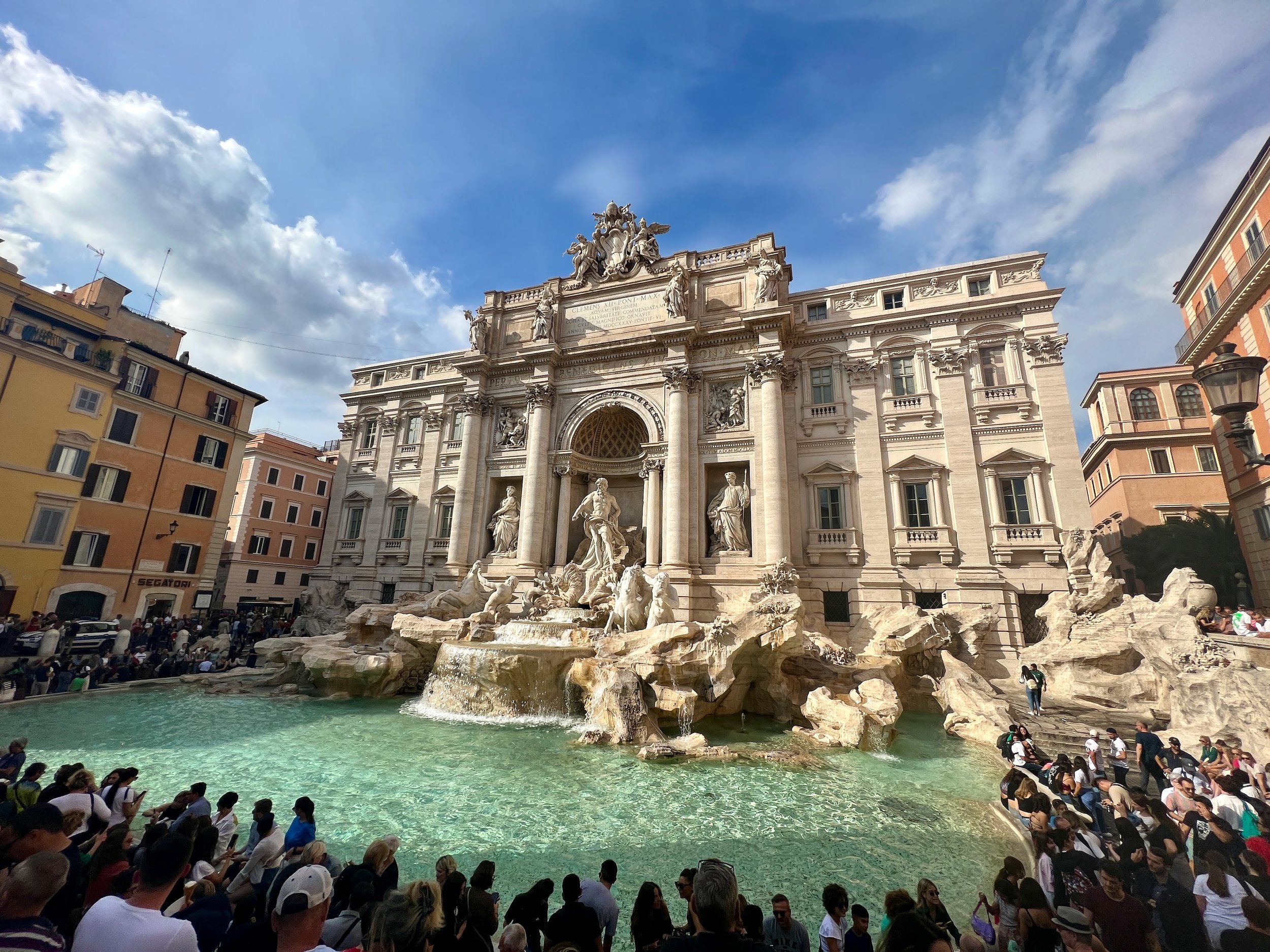When Nature Is the Most Interesting Part of Human Construction
Note: I’m quite disappointed in myself for not getting a photo of the fountain in the Mirage, which is described below. Instead, pictured here is a beautiful green plaza surrounded by high rise buildings in the heart of Buenos Aires, Argentina.
I recently spent a night in the Mirage casino in Las Vegas, and as I walked through the lobby toward the elevator banks leading to the hotel rooms, I was astounded to realize that the focal point of the building's architecture was an indoor tropical lagoon—a "mirage" in the desert. The focal point of the lagoon itself is a surging artificial waterfall dropping into a churning pool that creates a small stream running under a pedestrian footbridge. The waterfall is flanked by exotic tropical plants, most of which are, in fact, real.
According to Wikipedia, developer Steve Wynn wanted to create a resort that would be different from the typical Las Vegas casino, so he settled on this Polynesian theme with a focus on natural elements. Above and beyond the tropical oasis, the casino originally included animal habitats such as the Secret Garden (filled with large exotic cats) and a Dolphin Habitat, although these have since been closed. (Source)
Every time I visit Vegas, it's a bit of a shock to the system as I crawl out from under whatever rock or cave we've been hiding in for the past few months and am doused in the rampant consumerism, flashing neons lights, and over-the-top glitz and glam of Sin City. But even as I overcame the initial Vegas shock, I was intrigued by the idea that nature had been incorporated into this building as its most interesting and attractive element.
The integration of nature into this casino has undoubtedly been a success: the fake bridge crossing the rushing water is constantly filled with tourists taking selfies with the waterfall in the background or simply gazing at the rushing water as a way to collect themselves after hours of having their senses assaulted by the "Bling Bling Bling" of the slot machines.
As I reflected on this, I realized that while the Mirage might have taken the natural elements to the Nth degree, architects around the world have begun incorporating nature into their buildings more and more. As I walked around Puerto Madero in Buenos Aires a couple of weeks later, I looked up and spotted a skyscraper that had an open-air garden built into a corner of the upper levels, complete with living trees and flowing vines.
Seoul, South Korea
Countries in Southeast Asia have undoubtedly led the charge on these designs—just look at photos of some of the nature-covered skyscrapers in Singapore. Even when changing planes in the airport in Seoul, I was confronted by a towering trees and indoor garden within a vaulted glass-covered atrium in the airport terminal.
This Trend is Both New and Ancient
While this trend might seem new when we compare these modern buildings to those of the past century, in actual fact, this trend is very, very old—and we've only just now remembered how important even small doses of nature exposure can be to human beings.
While I'm not a big fan of cities, when I do get the chance to explore some of earth's more elderly and distinguished cities, I immediately head for the oldest and grandest buildings that I can find. Invariably, these buildings often find some way to incorporate natural elements into the construction. Castles and palaces almost always have courtyards with beautiful gardens. The grounds surrounding the palace are generally filled with towering trees. Even fully-enclosed buildings like cathedrals often include natural motifs or facades that evoke twisting vines or trees.
La Sagrada Familia, Barcelona, Spain
Historical cities also often feature plazas and public squares with beautiful gardens and towering trees. While the tall stone buildings might crowd the neighboring streets, the city's focal points always open onto a natural space.
Sometimes, the only nature that can be incorporated into the most ancient and built-up plazas is the sensation of flowing water created by a fountain. But even still, the tremendous fountains of Rome beckon crowds of tourists to simply sit and watch—watch the water shooting into the sky. Watch the water flowing down the rocks. The fractal patterns of the ripples of the water are soothing to the soul.
Trevi Fountain, Rome, Italy
I find it fascinating that this theme has been repeated in human architecture around the world for thousands of years. Try as we might to create "human progress," it seems that oftentimes the best art that we can create is simply a riff on the natural world or an integration of the natural world more closely into our lives.
What, then, can we learn from this?
My personal takeaway is that instead of working harder to incorporate nature into the artificial human landscape, I should instead remove myself from the artificial landscape and bring myself closer to nature. However, that conclusion stems from a position of privilege. That I can even conceptualize leaving the industry and the economy of the city behind in favor of a simpler existence, living in a van out in the desert or the mountains, is a lucky place to be in.
More broadly, let us be thankful for every dose of nature that we get. Whether the macrodoses of true wilderness trips or the microdoses of a tree growing in an airport terminal, any dose of nature that we can fit into our lives is welcome and beneficial. Let us never again forget how important nature is to the human animal!




